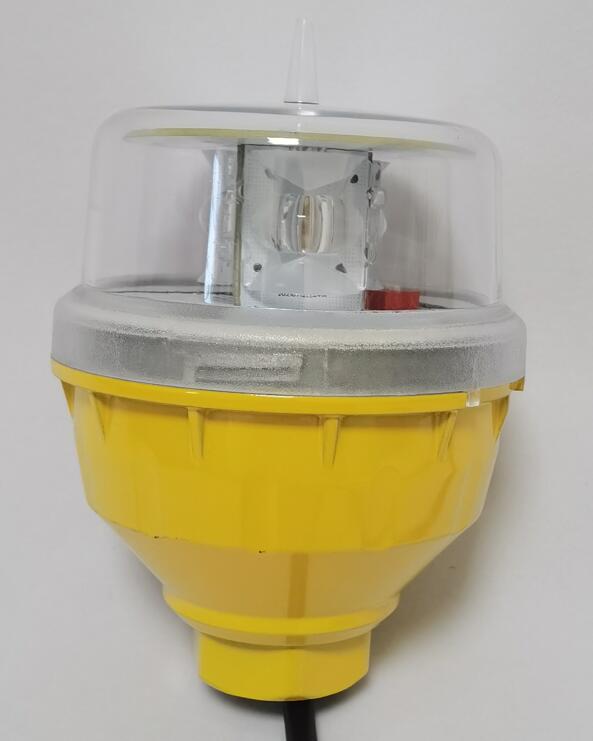Posted: 2025-03-07
The FAA L-810 obstruction light is a critical component in aviation safety, designed to mark tall structures and ensure they are visible to pilots, particularly during nighttime or low-visibility conditions. As a widely recognized standard in the aviation industry, the FAA L-810 obstruction light plays a vital role in preventing collisions and enhancing airspace safety. This article delves into the features, applications, and regulatory importance of the FAA L-810 obstruction light, providing a concise yet comprehensive overview.
1. What is the FAA L-810 Obstruction Light?
The FAA L-810 obstruction light is a low-intensity red beacon specifically designed for structures that are less than 200 feet above ground level (AGL). It is part of the Federal Aviation Administration's (FAA) lighting standards, which are outlined in Advisory Circular 70/7460-1L. These lights are typically used on structures such as communication towers, power lines, and buildings that pose a potential hazard to aircraft.
2. Key Features of the FAA L-810 Obstruction Light
Low-Intensity Red Light: The FAA L-810 obstruction light emits a steady red glow, making it highly visible to pilots without causing glare or distraction.
Energy Efficiency: Many modern FAA L-810 obstruction lights use LED technology, which consumes less power and has a longer lifespan compared to traditional incandescent bulbs.
Durability: Built to withstand harsh environmental conditions, these lights are resistant to weather extremes, including high winds, heavy rain, and temperature fluctuations.

Compliance: The FAA L-810 obstruction light meets the stringent requirements set by the FAA, ensuring it is suitable for use on structures that require low-intensity lighting.
3. Applications of the FAA L-810 Obstruction Light
The FAA L-810 obstruction light is commonly used in various industries to mark structures that could pose a risk to aviation safety. Some of its primary applications include:
Communication Towers: These towers are often located in remote areas and can be difficult for pilots to spot, especially at night.
Power Lines and Wind Turbines: Tall power lines and wind turbines are often installed in open areas, making them potential hazards for low-flying aircraft.
| faa l 810 obstruction light |
| faa l 810 obstruction lights |
Buildings and Construction Sites: High-rise buildings and construction cranes in urban areas require obstruction lighting to ensure they are visible to pilots navigating through densely populated airspace.
4. Regulatory Importance of the FAA L-810 Obstruction Light
The FAA L-810 obstruction light is not just a recommendation; it is a regulatory requirement for certain structures. The FAA mandates the use of these lights to enhance aviation safety and reduce the risk of collisions. Failure to comply with these regulations can result in fines, legal liabilities, and increased risk of accidents. Therefore, it is essential for structure owners and operators to ensure their lighting systems meet FAA standards.
5. Installation and Maintenance Considerations
Proper installation and maintenance of the FAA L-810 obstruction light are crucial for ensuring its effectiveness. Here are some key considerations:
Placement: The light should be installed at the highest point of the structure to maximize visibility.
Power Supply: Ensure a reliable power source, and consider backup systems like solar panels or batteries for uninterrupted operation.
Regular Inspections: Routine maintenance and inspections are necessary to ensure the light is functioning correctly and remains compliant with FAA regulations.
6. Advantages of Using FAA L-810 Obstruction Lights
Enhanced Safety: By marking obstacles, the FAA L-810 obstruction light significantly reduces the risk of aircraft collisions.
Cost-Effective: Compared to high-intensity lighting systems, the FAA L-810 obstruction light is more affordable while still meeting regulatory requirements.
Low Maintenance: LED-based FAA L-810 obstruction lights require minimal maintenance, reducing long-term operational costs.
7. Choosing the Right FAA L-810 Obstruction Light
When selecting an FAA L-810 obstruction light, consider the following factors:
Compliance: Ensure the light meets FAA standards and has the necessary certifications.
Durability: Choose a light that is built to withstand the environmental conditions of your location.
Supplier Reputation: Purchase from a reputable supplier with a track record of providing reliable and high-quality products.
The FAA L-810 obstruction light is an indispensable tool for ensuring aviation safety and regulatory compliance. Its low-intensity red glow, energy efficiency, and durability make it an ideal choice for marking structures that pose a potential hazard to aircraft. By understanding its features, applications, and regulatory importance, structure owners and operators can make informed decisions that enhance safety and reduce risks.
In summary, the FAA L-810 obstruction light is a vital component of modern aviation safety systems. Whether you're managing communication towers, wind turbines, or high-rise buildings, investing in compliant and reliable obstruction lighting is essential. Always prioritize quality and compliance to ensure your structures are safely visible to pilots, contributing to a safer airspace for everyone.